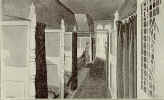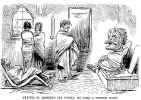5. London women and the bath

Opening times for women were also generally restricted, though some of the larger establishments did provide separate facilities.
Anthony S Wohl has noted that publicly funded swimming pools for women were invariably smaller and less well furnished than those for men.12
Unsurprisingly, the same situation applied to Turkish baths, even though some advocates of the bath did realise, and stated publicly, that this was inequitable.
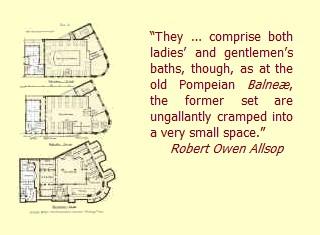
In his standard work on the design of the Turkish bath, for example, the writer Robert Owen Allsop suggested that little progress in this matter had been made since Roman times,13 though there were, in fact, a few exceptions.
At least twenty-one of London's Victorian Turkish baths made some provision for women bathers.
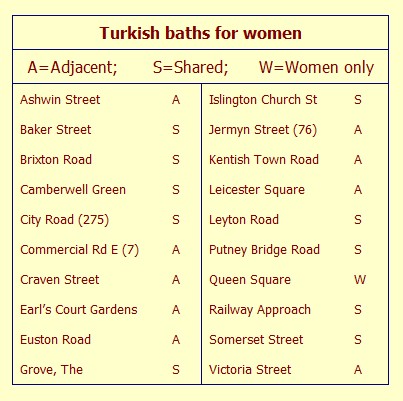
Ten of these had separate women’s baths adjoining the men’s, ten shared the men’s facilities for a day or more per week, and one short-lived establishment—about which very little is known—had no male counterpart. Hot-room temperatures were usually lower in women’s baths, though whether this was actually preferred by women, or merely cheaper to maintain, is not known.
From the start, however, women were involved in every aspect of the Turkish bath: as patients and bathers, as attendants and shampooers, as managers, shareholders and even proprietors, though I have yet to find, even after the 1884 Married Women’s Property Act, a woman proprietor who was not the legatee—be she widow, daughter, or other relative—of a deceased male proprietor.

As with most aspects of the Victorian Turkish bath, some of the more intriguing questions about its use by women await further research.
Did male proprietors, for example, advertise the Turkish bath as a beauty aid because they expected women to dedicate their time to making themselves more attractive to men?
Or were women using male approval of the bath to facilitate the management of such visits for their own enjoyment?
In closing, I should not wish to give the impression that all was plain sailing for the advocates of London’s Turkish baths.
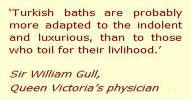
And there were doctors aplenty who were totally opposed to the bath,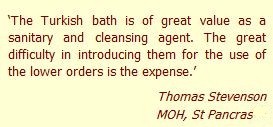
None of these arguments converted those who had already discovered the sheer enjoyment to be found in taking Turkish baths.
Their popularity did not wane till after the Vctorian era, and it is reassuring to discover that Victorian bathers sensibly ignored the words of such as Dr Richardson, who in 1861, wrote to the British Medical Journal,
From the use of the heated air bath as a therapeutical agent to its use as a social enjoyment or luxury, is a wide step, and a step which I, for one, hold back from taking. It seems to be the misfortune of this remedy, that its administration is for a time attended by a sensation of great pleasure and satisfaction...16
Like people of all periods and places, the Victorians, given the opportunity, appreciated and enjoyed their sensual pleasures.


